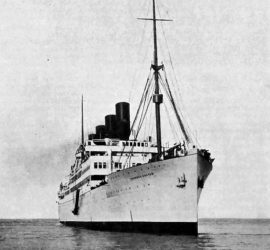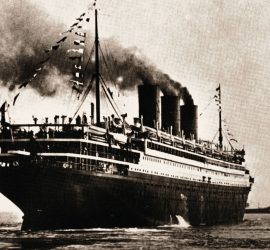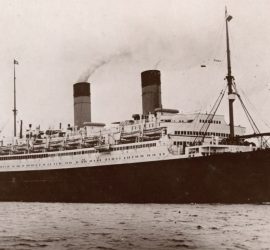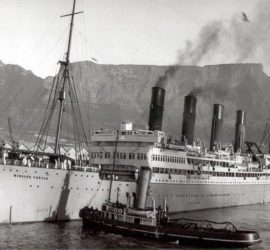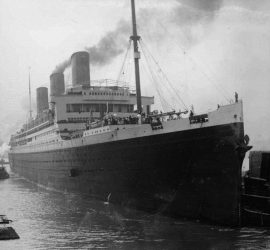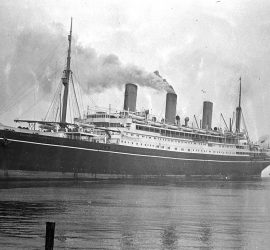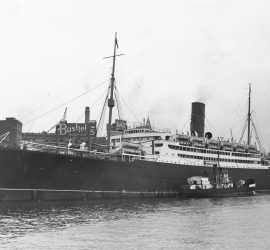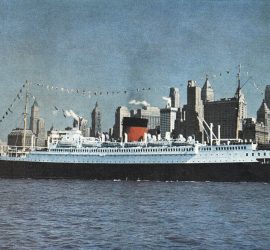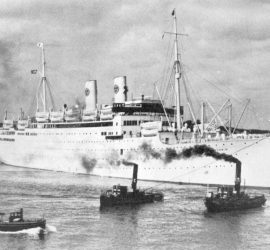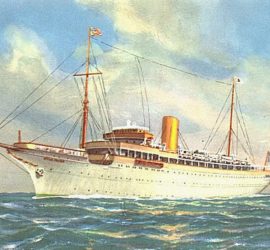1921 – 1958 / As a four-funnelled ship not on the North Atlantic run, Union-Castle Line’s Arundel Castle was of a rare breed. She was later rebuilt with two funnels, and served profitably for almost four decades before being scrapped.
1920s
1921 – 1947 / Another CGT masterpiece, the Paris followed the company line in offering comfort and amenities rather than speed. Unfortunately, she suffered fires two times in her life, the second of which led to her capsizing in port shortly before World War II.
1922 – 1936 / Also known as Columbus / Originally a German ship, her construction was interrupted by World War I. Handed over to White Star after the war and renamed Homeric, it took several more years to complete her. She then served as a British ship for a little more than a decade, before being sent to the breakers.
1922 – 1943 / The second of Union-Castle Line’s ‘four-stackers’, the Windsor Castle was not as fortunate as her younger sister. She was torpedoed and sunk in the Mediterranean during World War II.
1922 – 1940 / Also known as Bismarck / Originally built as the final and largest ship of HAPAG’s pre-WWI trio, she never saw service as a German ship. Awarded to White Star after the war, she became their flagship Majestic.
1922 – 1952 / Also known as Admiral von Tirpitz, Tirpitz, and Empress of China (II) / Built and intended as a ship of the Hamburg-Amerika Line, this ship was yet another that was handed over to Britain following World War I. Joining the Canadian-Pacific Line, she then had a long career both as a civilian vessel and a troop transport.
1923 – 1956 / An intermediate Cunarder without the flair of her larger fleetmates, the second Franconia entered service in the years between the world wars. She served with distinction in both peace and war, before being sent to the breakers in 1956.
1924 – 1962 / Also known as Empress of Australia (II) and Venezuela / Built as a smaller, less glamorous ship of the French Line, De Grasse was captured by Germany during WWII. Returned to her original owners after the war, she was later sold to Canadian-Pacific Line. Her final years was spent as an Italian ship on the South American run.
1925 – 1966 / Also known as Berlin / The first ship built for the Swedish-American Line, the Gripsholm was also the first motor ship on the North Atlantic run. She helped cement the company’s reputation on the high seas, but was eventually sold and enjoyed a second life as a German liner.
1927 – 2006 / A truly unique vessel, the Stella Polaris was constructed purely with cruising in mind. Offering an exclusive experience, she quickly became a legend in her field and would enjoy a long, distinguished career. After a few decades as a stationary ship in Japan, she was unfortunately lost when she sank while under tow in 2006.

